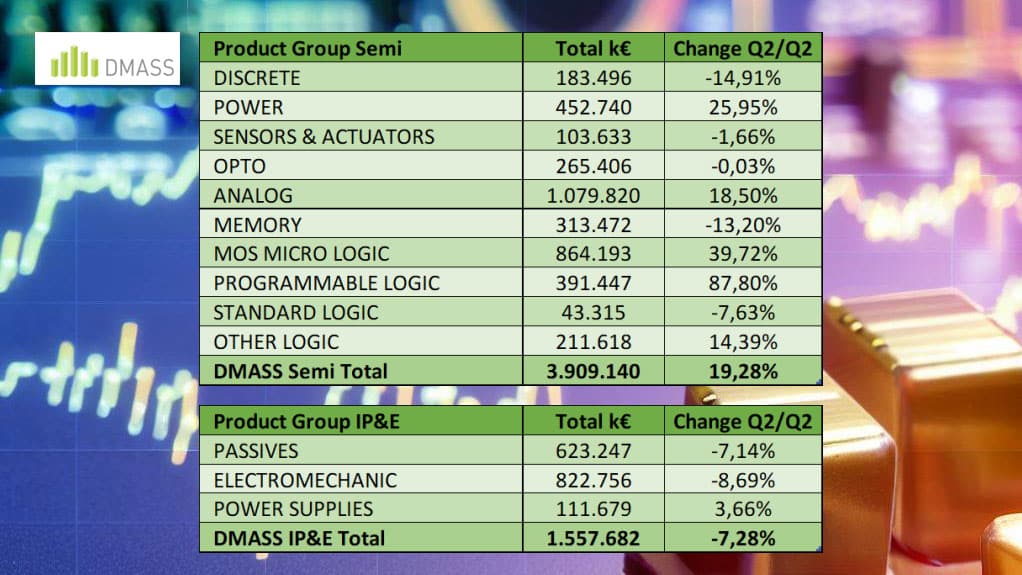According to European Components Distribution (DMASS) Europe e.V., European components distribution finally experiences the long-awaited slowdown of an overheated market. While in Q2 Semiconductors still grew by 19.3% to 3.91 billion Euro, IP&E (Interconnect, Passive and Electromechanical) components already saw a decline of 7.3% to 1.56 billion Euro. The total distribution market grew by 10.3% to 5.47 billion Euro.
Key facts:
- European Components Distribution grows by 10.3% to 5.47 billion Euro.
- Semiconductors finish at 3.91 billion Euro (+19.2%).
- Interconnect, Passive & Electromechanical decline by 7% to 1.56 billion Euro.
- Outlook 2023: softer bookings, high design activities.
- DMASS Europe represents ~85% of European components DTAM.
Hermann Reiter, chairman of DMASS: “The rather solid numbers compared to a record year (2022) cannot hide the fact that customer orders have continued to slow down, which will inevitably result in a weaker second half of the year. Inventories are full and need to be digested. At the same time, availability across the market has improved significantly and instances of components shortages, while still present – for example SIC- and GaN-Devices – have reduced a lot. This is a great relief, and we hope for the return of some normality in the market. On a positive note, we are convinced that the long-term demand is not hampered, and design activities remain dynamic among all the challenges.”
Semiconductors (Q2):
With a total of 3.91 billion Euro, DMASS continued to deliver strong semiconductor revenues. Regionally, however, the differences were quite notable. While Germany, Italy, France, Austria and Turkey showed over-proportional growth and UK, Switzerland, Iberia, Nordic and Eastern Europe remained well in the double digits, Benelux, Israel, the rest of Europe stayed just positive. Product-wise, Microcontrollers, Programmable Logic and Power Discretes really drove the lion’s share of the growth in Q2.
Interconnect, Passive and Electromechanical Components (Q2):
As IP&E were ahead of semiconductors in cyclicality, the return to normal market conditions, started earlier and thus, Q2’s versus record 2022 is not really a surprise. The minus of 7.3% to 1.56 billion Euro did not occur equally across regions and products. UK and France performed above average, Germany, also the biggest market here, at average, while Italy declined double-digit. On the product side, Passives declined at average level and Power Supplies actually grew, while Electromechanical components (including Interconnect) dropped by almost 9%.
Chairman Hermann Reiter: “The last 2 years certainly have changed a lot in our industry. The awareness of the significance of a steady supply chain has never been higher, also in circles where knowledge about our specific market is scarce. Also, the conditions of trade have turned almost from free market to delay management and to some conditions that certainly were hard to swallow. Therefore, it is more important than ever to cooperate better in the supply chain to at least mitigate the potential risks and find better solutions.”
“The future of the components industry, while looking generally positive, depends on a variety of massive challenges that can turn the market either way. We must get prepared for that.”
